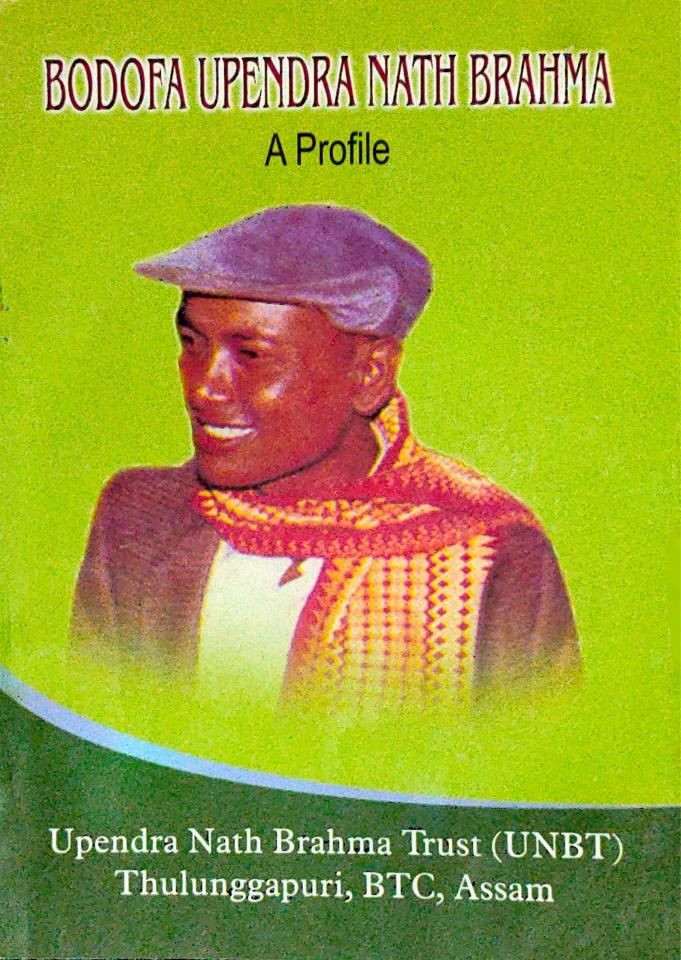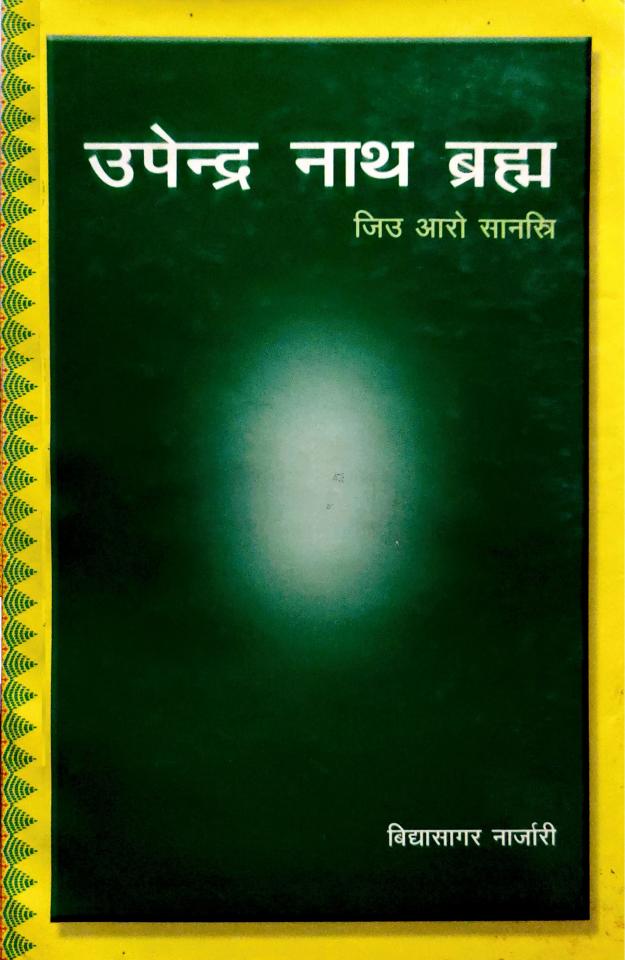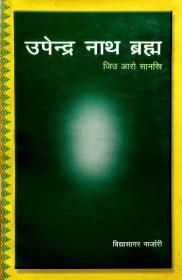बड'फा उपेन्द्र नाथ ब्रह्म (Bodofa Upendra Nath Brahma)
Upendra Nath Brahma was born on 31st March, 1956 in a village called Baragari, under Dotma block of Kokrajhar district. His father's name was Manglaram Brahma and Mother's name Lepsri Brahma. They were very poor. Upendra Nath had two brothers named Shyameswar Brahma, Bimal Brahma and two sisters named Timpri Brahma and Ramba Brahma.
Upendra Nath Brahma is the architect of modern Bodo Community. He started from scratch to build the modern generation. The Bodos had their Kingdoms and were once a dominant people in an extensive area of the Northeast, parts of Bengal, Bihar and Nepal. How and when this dominant community lost its glorious part and entered into a period of darkness is yet to be known. By the time Gobinda Chandra ruled in Kachar, the community's vitality had sapped to a considerable degree. Gobinda Chandra's Kingdom does not reflect the kind of Bodo dominance narrated by the eminent historian Dr. Suniti Kr. Chattarjee. In fact, it was only avestige of the powerful Bodo Kingdom alluded by the historian and other scholars.
The sun of the Bodo Kingdom set below the horizon with the merger of the Bodo Kingdom to the British rules under the doctrine of lapse as Gobinda Chandra had no successor. The arrival of the British on Indian soil ushered in the period of modernism. They introduced western education, new administration replacing the rules of Kings, controlled ne society with the help of police and sophisticated fire arms etc. In case of the Bodos, moderni sm did not forked any light to the people; rather it served as a black canopy to smother them to death. The period between the fall of Gobinda Chandra and the religio-social reformation movement of Kalicharan Gurudev witnessed a massive assimilation of the Bodos into Assamese or other communities. The Bodo People had lost their confidence to exist as a district community. The religio- social reformation movement of Raja Ram Mohan Roy was aimed to hold together the divided sections of people along caste lines in order to fight unitedly against the Britishers. Taking his cue from Raja Ram Mohan Roy, Kalicharan launched the same reformation movement among the Bodo people with two distinct purposes; to eradicate some despicable social practice and secondly to restore self- confidence. Many combined factors, along with that movement succeeded to a great extent in bringing to halt the rapid assimilation phenomenon. The Tribal League formed after independence become an important forum for voicing the fear and grievances of the tribal people, but it did a blunder in discarding its political character on the false assurance of the then Congress Leaders of Assam. Then came the Plains Tribal Council of Assam, which was formed to voice the aspirations of the Bodos and other tribes with a slogan of Udayanchal, an Autonomous State for the tribes. But the leaders of the political party used the slogan only for electoral purpose, while the common people started to internalize the dream of statehood.
By the second half of the eighties the minds of the young people were keenly aroused for separate state, put the leaders of political parties could not diner the expectation of the people. The common people got divided along party lines and polarization had already started. Against this backdrop of socio-political condition of the Bodos, U.N. Brahma, an M.Sc. in physics from Gauhati University came to shoulder the post of the President of the ABSU to lead the famous Bodoland movement, which turned the destiny of the whole community. (Copied from booklet)




Add new comment